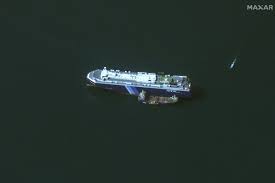The demand for India’s Basmati, the renowned long-grain aromatic rice, has witnessed a decline among traditional buyers in the Middle East, the US, and Europe due to increased costs. This surge in pricing is attributed to the escalating tensions in the Red Sea, recognized as the shortest and most efficient trade route for ships navigating from Asia to Europe.
Incidents involving attacks by Iranian-backed Houthis from Yemen on commercial vessels transiting the Red Sea have compelled shippers to divert from this critical trade route. The alternative, longer route around the Cape of Good Hope at the southern tip of Africa, has imposed an additional 3,500 nautical miles (6,500 km) to the journey, along with almost half a month of sailing time for each trip. This substantial extension in the shipping route has resulted in a noteworthy increase in shipping costs.
Exporting Basmati from India has become a formidable challenge for shippers, with freight costs skyrocketing up to five times, driven by increased insurance premiums, container shortages, and extended transit times, according to Vijay Kumar Setia, Director of Chaman Lal Setia Exports Ltd and former President of the All India Rice Exporters’ Association.
A portion of the Basmati inventory remains stranded at various ports or processing units, while some stock is being redirected to the domestic market, leading to an approximate 8 percent decline in local market prices.
As the world’s largest rice exporter, India dispatches over 4.5 million tonnes of Basmati rice annually. Approximately 35 percent of the 7.5 million tonnes produced are shipped to Europe, North America, North Africa, and the Middle East via the Red Sea.
Vijay Kumar Setia notes the hesitancy of buyers to accept higher prices, resulting in less smooth business operations. The increased logistic costs are eroding profits for exporters. The disruptions in the Red Sea are not only affecting Basmati but also causing losses in the shipment of various products from tea to spices and grapes to buffalo meats from India.
The chaos in the Red Sea is not limited to exports; it is also impacting imports, including fertilizers, sunflower oil, machinery components, and electronic goods to India. Delays in these imports raise the specter of higher costs for consumers. There is growing concern that the unrest may lead to supply-chain disruptions, contraction of trade, and exacerbate the slowdown in food inflation.
India heavily relies on the Red Sea route through the Suez Canal for trade with Europe, North America, North Africa, and the Middle East. These regions constituted approximately 50 percent of India’s exports (amounting to 18 trillion rupees or $217 billion) and around 30 percent of imports (17 trillion rupees or $205 billion) in the fiscal year ending March 2023, according to CRISIL Ratings.









